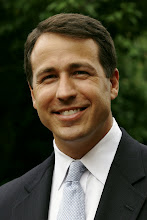I’ve been fascinated to delve into the briefing materials from various sources about Afghanistan and thought I’d share.
Afghanistan is 150th on a list of 154 countries for being least developed on a host of key metrics. The GDP is close to $115 per person, per year (that is not a typo). Foreign aid is the single biggest economic engine. The country has no more than 20 miles of railroad track and 5000 miles of improved road (NC alone has nearly 80,000 miles in state-maintained roads, not including county, local and interstate). Afghanistan has an approximate population of 30 million people – double the population it had in 1980. Forty (40) percent are under the age of sixteen (16). One in five children dies before the age of five (5). The median life expectancy is forty-three (43) years old. (I’ll turn 38 en route).
Afghanistan is made up of many, many ethnic groups and tribes including Pashtuns, Tajiks, Uzbeks, Hazaras and many smaller groups. An artificial line divides Afghanistan from Pakistan (the Durant line drawn in the 1890s). While Afghanistan is run by Pashtuns (approximately 40 percent of the population), twice as many Pashtuns live across the “border” in Pakistan (approximately 12 million in Afghanistan and 27 million in Pakistan). While it is said that the people of Afghanistan identify themselves as citizens of that state, the stronger ties apparently begin at the village, tribe and ethnic group (including across the borders) and extend to the super-national identification with Islam. Yet, even within the tribes, family members are known to take up arms against fellow family members from time to time.
As noted in a very detailed analysis of Afghan Pashtun fighters and their tactics in battles with coalition forces: “they almost never surrender, even in the face of overwhelming odds and almost certain death.” However, if a Pashtun village takes you in as its guest – even an American Soldier – they will extend the same ferocity in your defense, including against other Pashtuns. This seemingly contradictory set of values is known as the Pashtunwali.
In a country that is as under-developed, impoverished, fragmented, decentralized, artificially drawn and culturally remote as Afghanistan, our pathway to strategic success must require alignment of these deeply embedded Pashtunwali values with our own.
Wednesday, August 3, 2011
A Little Bit About Afghanistan
Posted by
Cal Cunningham
at
9:28 PM
![]()
![]()
Subscribe to:
Post Comments (Atom)

No comments:
Post a Comment